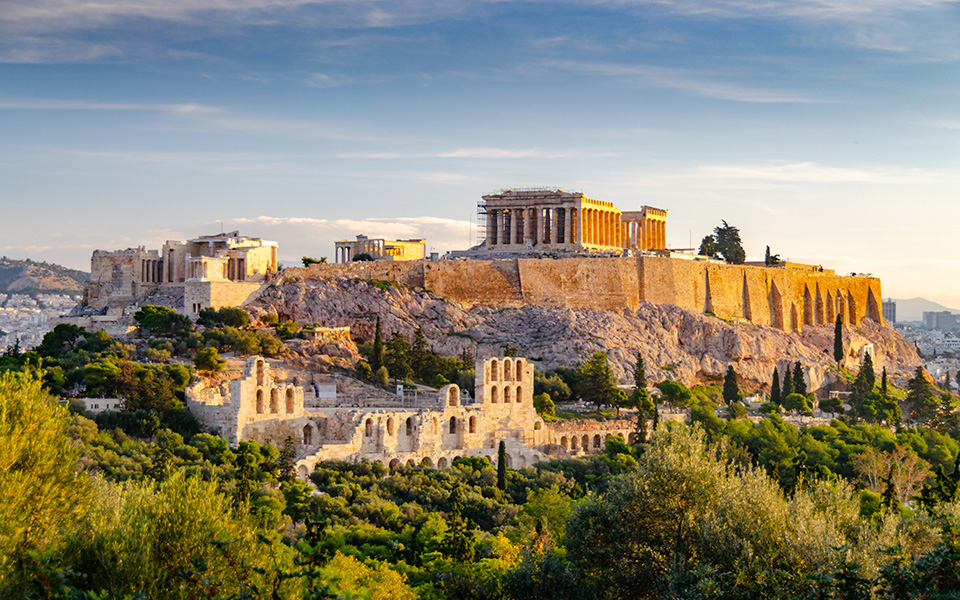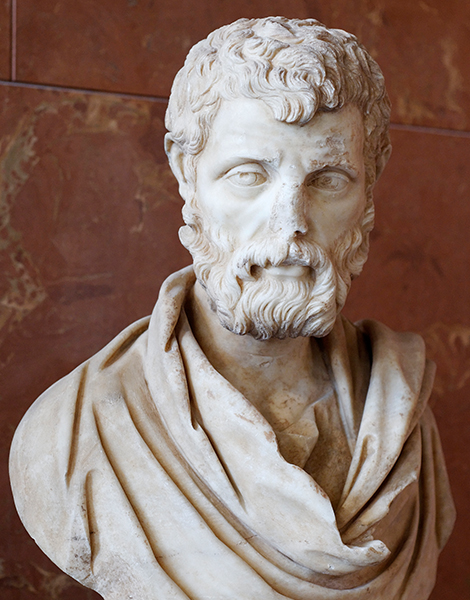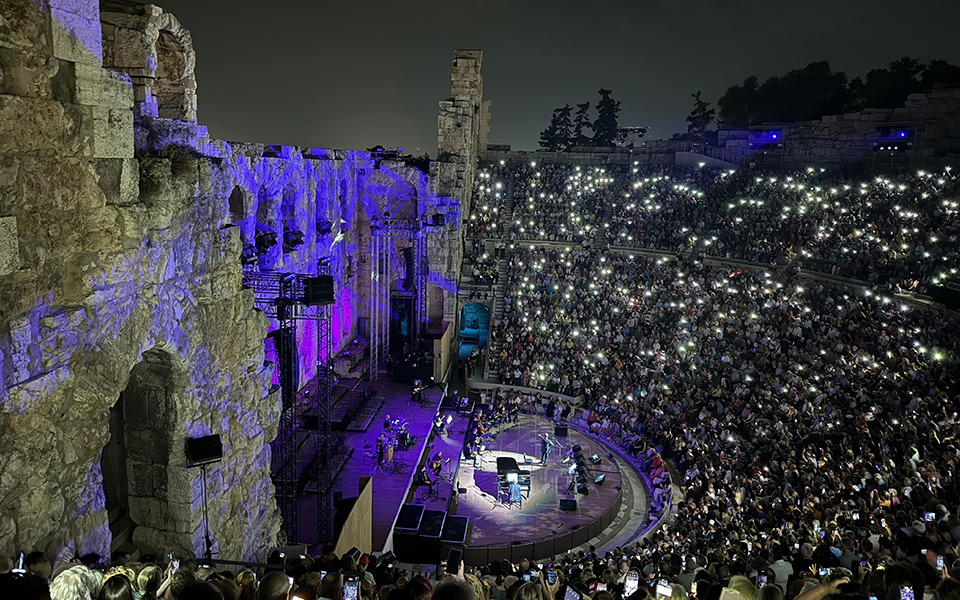As nightfall settles over Athens, the cicadas strike up their acquainted, hypnotic refrain. Alongside the cobbled promenade of Dionysiou Areopagitou, avenue musicians tune their devices, households wander previous neoclassical façades, and the golden gentle on the Acropolis fades right into a comfortable, silvery glow. For a second, it feels just like the Athens of one other age.
Under the mighty Parthenon, one thing stirs. Music – amplified not by audio system, however by historic stone – rises gently into the nice and cozy night air. An operatic cantata, or maybe a full symphony orchestra, performs beneath the celebrities to an viewers of 1000’s, seated in sweeping rows of Pentelic marble. That is the Odeon of Herodes Atticus: historic, but alive. A Roman theater practically 1,900 years outdated, reborn as one of many world’s most evocative efficiency areas.

© Shutterstock
Tucked into the southwest slope of the Acropolis, simply steps from the Theater of Dionysus, the Odeon is seen to all who ascend the Sacred Rock. But few pause to ask who constructed it – or why. Its arcaded façade blends into the archaeological panorama so seamlessly that its story is usually ignored.
That is the story of a monument that has witnessed empire, centuries of abandonment, and a spectacular trendy renaissance – and of the enigmatic determine behind its creation. Herodes Atticus, Athenian aristocrat and Roman senator, was amongst antiquity’s most prolific benefactors. However he was additionally a person shadowed by scandal, rumored to be complicit in a darkish household tragedy. Set towards the backdrop of a unprecedented constructing marketing campaign, his present to Athens was a conspicuous show of public devotion – and maybe a reckoning with private grief.

© Shutterstock
Athens Beneath Roman Rule: A Metropolis Remade
By the point emperor Hadrian got here to energy within the early second century AD, Athens was not the democratic powerhouse of the Classical age. However it remained steeped in mental status – a dwelling museum of philosophy, rhetoric, and ancestral glory. Hadrian, certainly one of Rome’s most erudite rulers and an unabashed philhellene, noticed in Athens not a relic however a canvas: a legacy to be renewed. With tireless ambition, he set about increasing and enhancing it, restoring town of Theseus and of Pericles to its rightful place of prominence on the imperial map.
Throughout his reign (AD 117–138), Athens skilled a sort of second delivery. New temples, stoas, libraries, and public fountains sprang up throughout town. Most formidable of all was the colossal Olympieion – the Temple of Olympian Zeus – which Hadrian accomplished after greater than six centuries of delay (development had begun within the sixth century BC however was lengthy deserted). Close by, he erected a monumental arch bearing a pointed inscription:
“That is Athens, town of Theseus / That is town of Hadrian, not of Theseus.”
The message was clear: this was now a Roman Athens, reshaped by means of imperial imaginative and prescient but anchored in Greek heritage.

© Shutterstock
Hadrian’s largesse stood in stark distinction to the trauma Athens had endured two centuries earlier. In 87 BC, the Roman normal Sulla besieged town through the First Mithridatic Warfare, crushing a riot towards Roman authority with brutal effectivity. The monuments of the Acropolis had been spared, however the metropolis itself was sacked – blood reportedly flowed by means of its streets – and Athens entered a protracted decline. Hadrian’s constructing marketing campaign, together with the patronage of elite Athenians like Herodes Atticus, was a part of a broader revival: an effort to revive the cultural and civic vitality of the traditional metropolis.
The Odeon of Herodes Atticus, constructed simply many years after Hadrian’s dying, emerged from this identical spirit of renewal. Roman in type however Greek in perform, it was supposed for music, oratory, and poetic efficiency – a stage for cultivated sound, not gladiatorial spectacle. Its vaulted inside and cedar-wood roof, sourced from Lebanon, embodied Roman engineering, whereas its objective hearkened again to the traditions of the Greek stage.
Rising on the foot of the Acropolis, the Odeon was greater than a venue: it was a public declaration, a bridge between the nice civilizations of Greece and Rome, and a monument designed to endure.


© Shutterstock
Herodes Atticus: Athens’ Philanthropist or Powerbroker?
Accomplished round AD 161, the Odeon (in any other case often called the “Herodeion”) was devoted to the reminiscence of his spouse, Appia Annia Regilla – a Roman noblewoman of famend Annia gens (household), associated to a number of emperors, a priestess of Demeter, and mom of six. But like a lot of Herodes’ life, the monument hovers between public generosity and personal shadow. Even Pausanias, the second-century Greek traveler and geographer, took word of the Odeon’s significance, calling it a “exceptional” constructing … “second to none of these which we all know in dimension and within the concord of its proportions” (Description of Greece 1.21.13).
Born into immense wealth in Marathon round AD 101, Herodes belonged to a lineage of Athenian aristocrats lengthy allied with Rome. His full identify – Lucius Vibullius Hipparchus Tiberius Claudius Atticus Herodes – echoed with imperial status, signaling each elite Greek heritage and Roman senatorial authority. Educated in rhetoric and philosophy, he rose to fame as a celebrated speaker in Athens and Rome, ultimately turning into tutor to the long run emperors Marcus Aurelius and Lucius Verus.

His renown was matched by his huge fortune. The household property encompassed huge landholdings in Greece and Italy, and Herodes channeled his wealth into a unprecedented array of public works: a theater at Corinth, a stadium at Delphi, the monumental nymphaeum (fountain) at Olympia (additionally devoted to his spouse); the Panathenaic Stadium in Athens; aqueducts, baths, temples. As Philostratus noticed in his Lives of the Sophists, Herodes “didn’t go away any metropolis in Greece with out giving it some proof of his wealth.” (Sophist. 2.1.6).
But none of those tasks carried the emotional weight of the Odeon – inbuilt marble, however born, maybe, of guilt.
In AD 160, Appia Regilla died beneath deeply suspicious circumstances whereas eight months pregnant. Herodes’ freedman, Alcimedon, was accused of kicking her within the stomach, inflicting untimely labor. She bled to dying, and it was alleged that Alcimedon had acted on Herodes’ orders. He stood trial in Rome for first-degree homicide of his spouse and was acquitted, however doubts lingered. Regilla’s highly effective brother, Appius Annius Atilius Bradua – a serving consul – pursued authorized motion, and the case got here earlier than the imperial courtroom of none aside from Marcus Aurelius.
No phrases survive from Regilla herself. However the Roman legislation on murder provides a chilling reflection: “A person who strikes his pregnant spouse, from which act she dies, is taken into account notorious as if he had dedicated murder.” (Digest 48.8.1). Herodes, nonetheless, was finally exonerated.
Was the Odeon a tribute from a grieving man – or a calculated act of self-vindication? A private eulogy made public?

In some ways, Herodes was a forerunner of the fashionable philanthropist: a determine of immense means who reshaped public life by means of personal wealth. Like immediately’s tech moguls – Invoice Gates, Elon Musk, Jeff Bezos – his identify was inscribed into the material of cities. However what do such items reveal about character? When does generosity serve the frequent good, and when does it masks ambition – or consolidate management?
Appia Regilla’s destiny reminds us how delicate the boundary is between public picture and personal consequence. As a priestess of Demeter in Athens and a member of certainly one of Rome’s strongest households, she occupied a rarefied place within the imperial world – revered, seen, and but, as a girl, profoundly susceptible. Her silence within the file could be the most haunting absence of all.

Destruction and Revival
As soon as the applause pale and Rome’s empire started to fracture, the Odeon of Herodes Atticus fell into silence. Like so many monuments of the Roman world, its destiny was sure to that of the state – and in AD 267, that destiny got here violently undone. In a sudden and devastating raid, the Germanic tribe of the Heruli breached Athens’ partitions and sacked its civic core. The Odeon, then barely a century outdated, was destroyed within the assault.
Within the aftermath, performances ceased. Civic life contracted, and Athens – already diminished from its classical heights – withdrew behind a tighter circuit of fortifications. The once-proud construction was deserted. Earthquakes adopted. The cedar-wood roof collapsed. Tiered seating was stripped, repurposed for different buildings or burned in lime kilns. By the Center Ages, solely fragments remained, half-buried on the foot of the Acropolis.
Vacationers in Ottoman-era Athens glimpsed little greater than a ruined arcade, mistaken by some for the stays of a Roman bathtub. However by the 18th and nineteenth centuries, Romantic-era antiquarians and early archaeologists started documenting the positioning with rising curiosity. It wasn’t till the 1850s that systematic excavation revealed the theater’s full footprint. Nonetheless, the Odeon remained a ghost of its former self – a damaged shell awaiting renewal.

The turning level got here within the Fifties. Beneath the path of Greek architect Anastasios Orlandos, a significant restoration marketing campaign started. The “cavea” (seating space), orchestra, and stage had been painstakingly rebuilt utilizing Pentelic marble, in line with the traditional type. The objective was not simply archaeological constancy, however cultural revival. The Odeon, lengthy silenced, would sing once more.
Its rebirth, nonetheless, has not been with out controversy. Some students query the reconstruction’s constancy to Roman design; others warning towards the wear and tear of normal use and the delicate steadiness between entry and preservation.
Nonetheless, few who sit beneath the Acropolis on a summer season night time would name it something however extraordinary. Its semi-enclosed horseshoe form, tiered stone seating, and exactly curved structure give it an acoustic readability that continues to astonish engineers and performers alike. Sound travels cleanly throughout its marble tiers with out amplification; even a whisper on stage will be heard within the highest rows. The traditional design achieves what trendy venues nonetheless attempt for – intimacy on a grand scale.
Although it holds round 5,000 spectators, the area feels remarkably shut. The proximity between viewers and performer, the comfortable reflectivity of the limestone and marble, and the silent presence of the Acropolis overhead all contribute to an environment that’s each theatrical and transcendent. Artists typically converse of the “power” of the area – how the stone appears to breathe with the group.

© Shutterstock
Since its return to life, the Odeon has hosted a unprecedented lineage of artists. Maria Callas gave a few of her remaining live shows right here within the late Fifties. Leonard Cohen, Frank Sinatra, Nana Mouskouri, Sting, Florence Welch, even the Greek symphonic dying steel band Septicflesh have carried out beneath the Acropolis. In 2024, Coldplay filmed the music video for their hit single “Feelslikeimfallinginlove” on its stage – a up to date echo of historic spectacle.
Every summer season, the theater turns into the crown jewel of the well-known Athens Epidaurus Festival – which celebrates its seventieth anniversary in 2025 – a convergence of opera, music, theater, and up to date performances beneath the Athenian moonlight.
In its second life, the Odeon invitations us not solely to recollect antiquity – however to expertise it, viscerally, as dwelling historical past.



Recent Comments